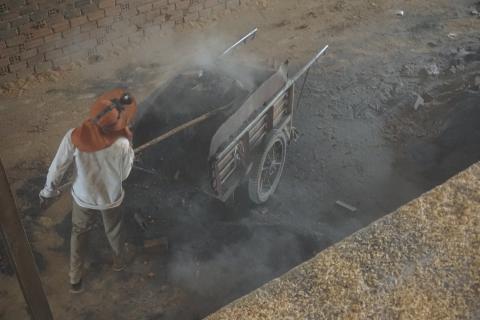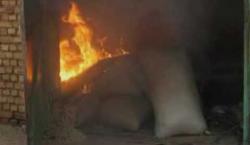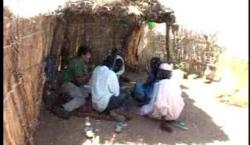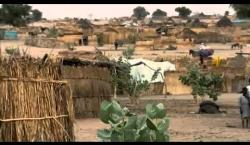Advertisement
Expose reveals child labour in Cambodian brick kilns despite crackdown
PHNOM PENH (Thomson Reuters Foundation) - Cambodian children are working in brick kilns across the country despite a recent government declaration that all furnaces were free of child labour following a state crackdown, a Thomson Reuters Foundation expose has found.
Kiln visits by the Thomson Reuters Foundation, a soon-to-be-released survey by the workers union, and interviews with police sources revealed widespread child labour in the brick industry.
Thousands of Cambodian families are estimated to be victims of bonded labour in the brick sector, where kiln owners offer loans to struggling workers and leverage the debts to trap them.
Scrutiny of Cambodia's construction boom - driven largely by Chinese investment - is growing after a government drive to stop children working at kilns and two recent building collapses that killed scores of labourers and relatives living on site.
When a 10-year-old girl lost an arm in a brick factory last March, the government banned children from production lines and said it would inspect kilns nationwide to root out child labour.
Last week, an official said all 486 kilns across Cambodia were free of child workers, defined as those aged under 15.
"If we find child labour, we penalise (it)," Vann Ratana, head of the labour ministry's child labour inspection unit, told a group of sector stakeholders. "So far, we have not found any."
But a police officer said there had been no real inspections to date, with teams consisting of various actors including police and state officials visiting kilns only "to inform" them.
"When inspectors visit, they don't see anything, but (child labour) is all still there," said the officer, who lives near a cluster of brick kilns, speaking on condition of anonymity.
Asked about child labour in kilns, a second source said police could not "control what parents do with their children".
Labour ministry spokesman Heng Suor rejected their claims.
"If you ask about labour inspections, the ministry of labour is the only source of information," he said.
"NO REAL INSPECTIONS"
The Thomson Reuters Foundation witnessed minors working or playing in all of about a dozen brick yards visited in January.
Yim Chanty was 13 when she started working with her parents to pay off a debt to a brick factory owner near the capital.
Almost two decades later, her family's debt has spiralled more than four-fold to $3,000 - in a nation where the average annual income is about $1,390- leaving Chanty with no choice but to also put her 11-year-old son to work at the brick kiln.
"Each family has two, three, four kids and they help when they are old enough," said Chanty, 31, one afternoon last month, sitting outside a row of shacks at the back of the brick yard.
"If we didn't have the debt, we wouldn't live like this," said Chanty, who did not use her real name for fear of reprisal.
A survey of 464 kilns by the Builders and Woodworkers Trade Union Association (BWTUC) found almost 4,000 children living in brick yards - 16% of whom said they were also working on site.
The report - a draft seen by the Thomson Reuters Foundation with the date of its public release unknown - said the true extent of child labour at brick kilns could be higher as children are often used as casual workers during busy periods.
Suor of the labour ministry said that the discrepancy between the government's findings and the union's survey was likely due to "different methodologies".
DEBT TRAP
Poverty fuelled partly by climate change has pushed countless Cambodian families - often rural farmers - into the country's booming brick industry, according to a 2018 report by researchers from Britain's Royal Holloway University.
Behind the growing demand for bricks, extreme heat, dangerous machinery and poor sanitation have created a "vicious cycle of poverty, illness and debt", the university report said.
Kiln operators are known to consolidate the debts of struggling farmers, who often get paid by brick. When the borrower dies or become unfit for work, their debt is forced upon their children, some of whom then never leave the industry.
"Once you take that first loan, you are trapped," said Khun Tharo of the Center for Alliance of Labour and Human Rights. "That is the tactic of the bosses: keep the workers in debt."
Labour officials found no evidence of debt bondage during their inspections of the country's kilns, Ratana said, adding that bosses had been warned "not to introduce debt" to workers.
But at one kiln visited by the Thomson Reuters Foundation, a notice instructed workers to call their boss to ask for loans.
"How can the government say there is no debt bondage?" asked Chin Malin, 43, who has been working at kilns for 18 years.
When her mother became ill about a decade ago, Malin turned to her boss for a loan that has left her $7,000 in debt. If she wishes to go off-site, her children must stay behind as collateral, so they can take on her debt if she fails to return.
"I owe my boss thousands ... My situation is hopeless," said Malin, who did not give her real name. "I am not sure that I will ever clear my debt - I can only make so many bricks."
(Reporting by Matt Blomberg, Editing by Kieran Guilbert and Belinda Goldsmith)



















Add new comment